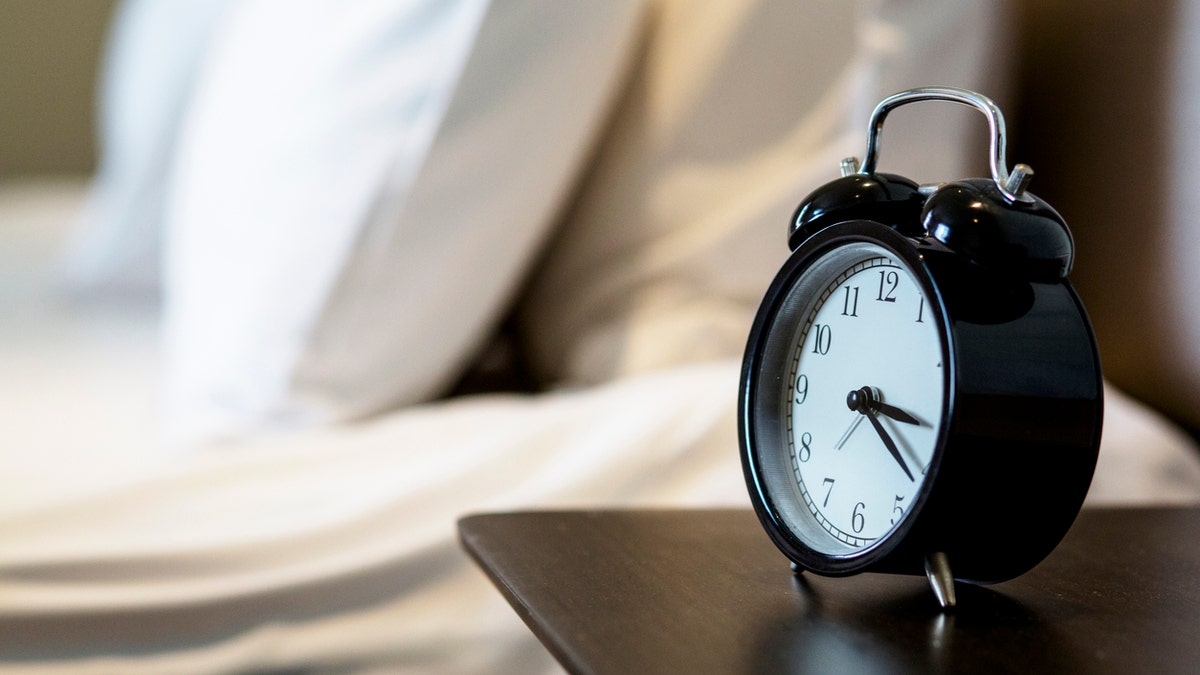Bill to make daylight saving time bill permanent stalls in House
Fox News congressional correspondent Chad Pergram gives a rundown of the congressional daylight saving time bill and the intricacy of time itself.
Daylight saving time 2023 will end this weekend.
Millions of Americans are anticipating the national clock adjustment, which will go into effect on Sunday, Nov. 5, 2023, and will end on Sunday, March 10, 2023.
What is daylight saving time?
Daylight saving time is an age-old practice that many people love to hate.
Twice a year, we adjust our clocks, either losing or gaining an hour of precious sleep. But do we truly understand the purpose and history of this time-honored tradition?
In preparation for the time shift, Fox News Digital explored the ins and outs of daylight saving time, from its origins to its impact on our lives and the ongoing debate about its usefulness in the U.S.
DAYLIGHT SAVING TIME ENDS: ARE THERE HEALTH RISKS?
Here are 15 little-known facts about daylight saving time.

Daylight saving time happens two times a year and either adds or subtracts an hour. (iStock)
1. Which two seasons are daylight saving time clock adjustments done for?
2. When do we expect clocks to change?
3. How did daylight saving time get its start?
4. When did the U.S. implement daylight saving time?
5. What is the Uniform Time Act of 1966?
6. How many countries observe daylight saving time?
7. Which states and territories skip daylight saving time?
8. Why was daylight saving time initially rejected in the United Kingdom?
9. Has there ever been another daylight saving time?
10. How do Americans feel about daylight saving time?
11. How many states want year-round daylight saving time?
12. Does daylight saving time have an economic impact?
13. Do farmers benefit from daylight saving time?
14. Can daylight saving time impact your health?
15. Is the U.S. getting rid of daylight saving time in 2023?

In November, millions of Americans turn back the clock when daylight saving time ends for fall. (iStock)
1. Which two seasons are daylight saving time clock adjustments done for?
Daylight saving time clock adjustments are done in the third month and 11th month of a calendar year.
The first clock adjustment is done in March for spring, when daylight saving time starts, and the second clock adjustment is done in November for fall, when daylight saving time ends.
The spring daylight saving time event adds an hour ("spring forward") so "there is one less hour in the day," while the fall daylight saving time subtracts an hour so "there is an extra hour in the day," according to the U.S. Department of Commerce’s National Institute of Standards and Technology.
2. When do we expect clocks to change?
The two dates for daylight saving time change each year because they are implemented on the second Sunday of March and the second Sunday of November.
Daylight saving time clock adjustments happen at 2 a.m. each time, according to the National Institute of Standards and Technology.
For spring daylight saving time, clocks jump forward to 3 a.m. once it strikes 2 a.m. local time, which skips 2 a.m. altogether.

Millions of Americans double-check their clocks and watches for daylight saving time. (iStock)
For fall daylight saving time, the opposite happens, and clocks jump backward to 1 a.m. once it strikes 2 a.m. local time, so the hour is repeated before it moves in chronological order again.
BAD TICKER: DOES DAYLIGHT SAVING TIME CAUSE 'BIOLOGICAL CLOCK SHOCK' TO YOUR HEART?
3. How did daylight saving time get its start?
The first instance of daylight saving time happened in Germany on April 6, 1916, during World War I, according to the Textual Records Division of the U.S. National Archives and Records Administration.
In a blog post, the Textual Records Division reported that the German Bundesrat’s Federal Council passed an order that instructed citizens to change their clocks by adding "an hour of daylight to the day during the months of May through September."
4. When did the U.S. implement daylight saving time?
Congress passed the Standard Time Act of 1918, according to a daylight saving time article published by the U.S. House of Representatives' History, Art & Archives website.
The Standard Time Act of 1918 was the country’s first nationwide daylight-saving law.
"The act, which built off an earlier campaign by railroad companies to synchronize their schedules in North America, established five time zones across the continental United States and Alaska and, importantly, mandated that clocks be advanced one hour on the last Sunday in March and set back one hour on the last Sunday in October," the History, Art & Archives wrote in its report.
PERMANENT DAYLIGHT SAVING TIME MAY BE HARMFUL TO OUR HEALTH, EXPERTS SAY
5. What is the Uniform Time Act of 1966?
The Uniform Time Act of 1966 was signed into law April 13, 1966, by President Lyndon B. Johnson, according to the U.S. House of Representatives' History, Art & Archives.
"Although the law would be amended several times in the coming decades, the Uniform Time Act of 1966 remains a major foundation of our system of timekeeping," the History, Art & Archives wrote.
6. How many countries observe daylight saving time?
Only 71 countries observe daylight saving time, according to Time and Date, a Norwegian-owned time zone and global clock website.

Not every country observes daylight saving time. (iStock)
Daylight saving time reportedly is still used in eight countries in North America, two countries in South America, seven countries in Asia, two countries in Africa, three countries in Oceania (Australia and the Pacific Islands) and 49 countries in Europe.
CLICK HERE TO GET THE FOX NEWS APP
7. Which states and territories skip daylight saving time?
Daylight saving time is not observed in Hawaii, Arizona (with an exception for the Navajo Nation), American Samoa, Guam, the Northern Mariana Islands, Puerto Rico and the U.S. Virgin Islands, according to the National Conference of State Legislatures, a nonpartisan organization made up of sitting state legislators in Washington, D.C.
8. Why was daylight savings time initially rejected in the United Kingdom?
The rejection was partly due to concerns that changing the clocks might cause confusion and disrupt social and economic life. It wasn't until 1916, after experiencing energy shortages during the war, that the U.K. finally adopted daylight saving time, realizing its potential benefits for energy conservation.
9. Has there ever been another daylight saving time?
In the U.S., daylight saving time used to be observed in April and October, according to the National Conference of State Legislatures.
Daylight saving time was moved to November and March with the Energy Policy Act of 2005, which addressed energy production in the U.S.

Between 2015 and 2019, 29 states introduced legislation for year-round daylight saving time, according to the U.S. Department of Transportation’s Bureau of Transportation Statistics. (iStock)
10. How do Americans feel about daylight saving time?
A daylight saving time survey published in March 2022 by Monmouth University, a private college in West Long Branch, New Jersey, found that 61% of Americans would like to get rid of "the nation's twice-a-year time changes."
The U.S. states that want year-round daylight saving time
- Pacific: Washington, Oregon, California and Nevada
- Mountain: Idaho, Utah, Wyoming, Colorado and New Mexico
- Central: Minnesota, Iowa, Missouri, Illinois, Oklahoma, Arkansas, Mississippi, Tennessee and Alabama
- Eastern: Ohio, Pennsylvania, Vermont, New Hampshire, Maine, Massachusetts, Rhode Island, Connecticut, North Carolina, South Carolina and Florida
11. How many states want year-round daylight saving time?
Between 2015 and 2019, 29 states introduced legislation for year-round daylight saving time, according to the U.S. Department of Transportation’s Bureau of Transportation Statistics.
The 29 states that would like to have daylight saving time year-round are seeking to "abolish the twice-yearly switching of clocks," according to the transportation agency.
The Department of Transportation is the government agency that has the authority to change daylight saving time, and it’s "a power it has held since its foundation in 1966," the statistics bureau wrote.
DAYLIGHT SAVING TIME: THERE OUGHTA BE A LAW
12. Does daylight saving time have an economic impact?
Daylight saving time can indeed have economic impacts. While the intended purpose is to conserve energy, its actual economic effects are multifaceted. On one hand, the extended daylight hours can boost businesses in retail, leisure and tourism sectors, as people tend to engage in more outdoor activities and spending. This can lead to increased revenue and job opportunities in these industries.
On the other hand, daylight saving time can result in economic costs, including the need to adjust technology and software, potential disruptions in international business and financial trading.
13. Do farmers benefit from daylight saving time?
Farmers' opinions on the benefits of daylight saving time are divided. While the extra daylight in the evening could provide more time for outdoor farm work, it also disrupts the routines of farm animals, like milking schedules and feeding times. This depends on specific farming practices and the extent to which they can adapt to the changing time.
CLICK HERE TO SIGN UP FOR OUR LIFESTYLE NEWSLETTER
14. Can daylight saving time impact your health?
The abrupt shift in time can disrupt sleep patterns, leading to grogginess and difficulty adjusting to the new schedule. Research has shown that the time change can result in an increase in health issues, including an elevated risk of heart attacks, strokes and accidents in the days following the transition.
While the effects may be temporary and generally mild, they highlight the significance of sleep and circadian rhythms in maintaining overall health and well-being.
15. Is the U.S. getting rid of daylight saving time in 2023?
The discontinuation of daylight saving time in the U.S. is not imminent; however, there is an ongoing federal government initiative to pass the proposed Sunshine Protection Act, aimed at establishing daylight saving time as a permanent practice, effectively eliminating the need to "fall back" in the winter.
For more Lifestyle articles, visit www.foxnews.com/lifestyle.

